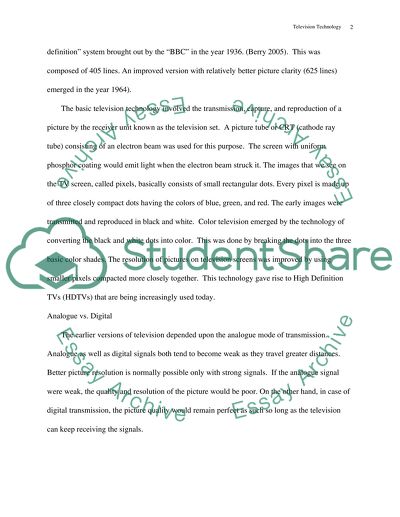Television Technology: From Analogue to Digital and Beyond Essay. Retrieved from https://studentshare.org/technology/1501308-television-technology-from-analogue-to-digital-and-beyond
Television Technology: From Analogue to Digital and Beyond Essay. https://studentshare.org/technology/1501308-television-technology-from-analogue-to-digital-and-beyond.


